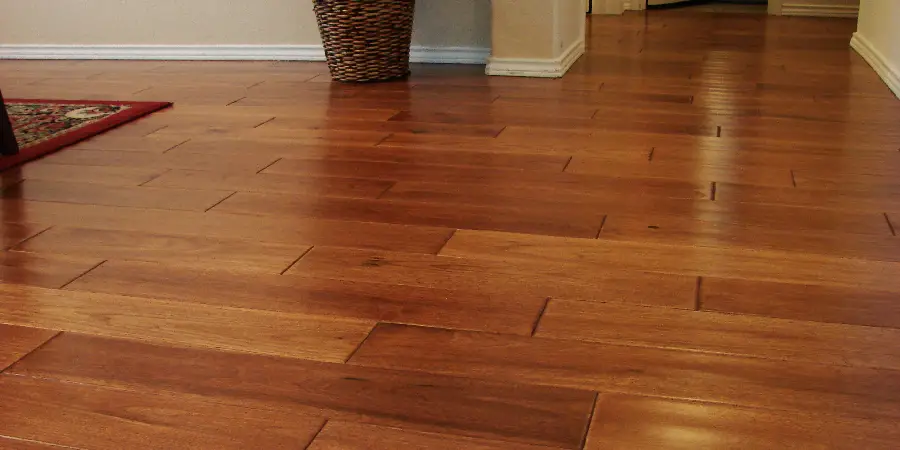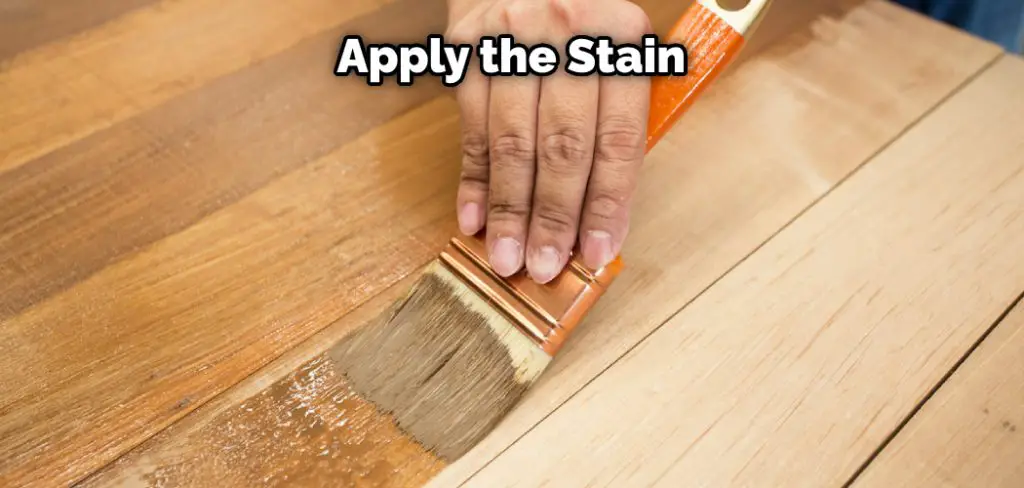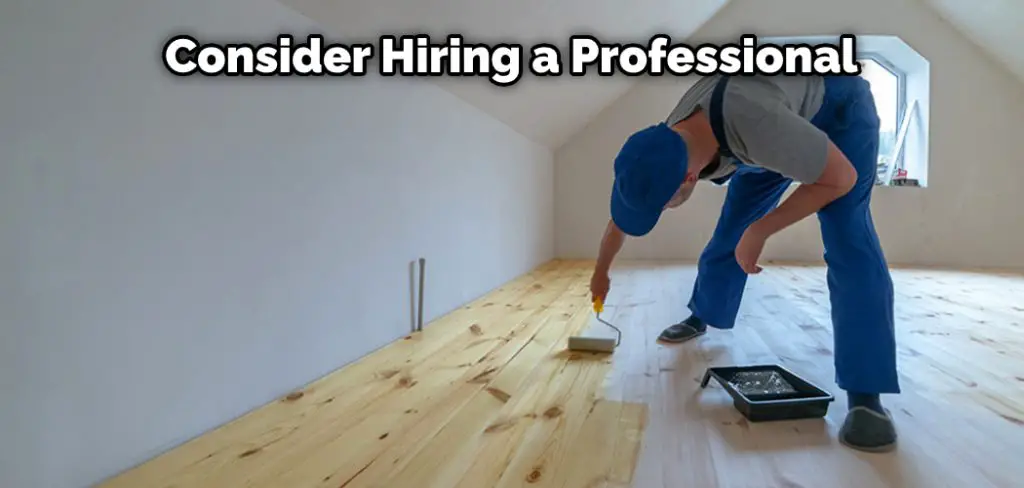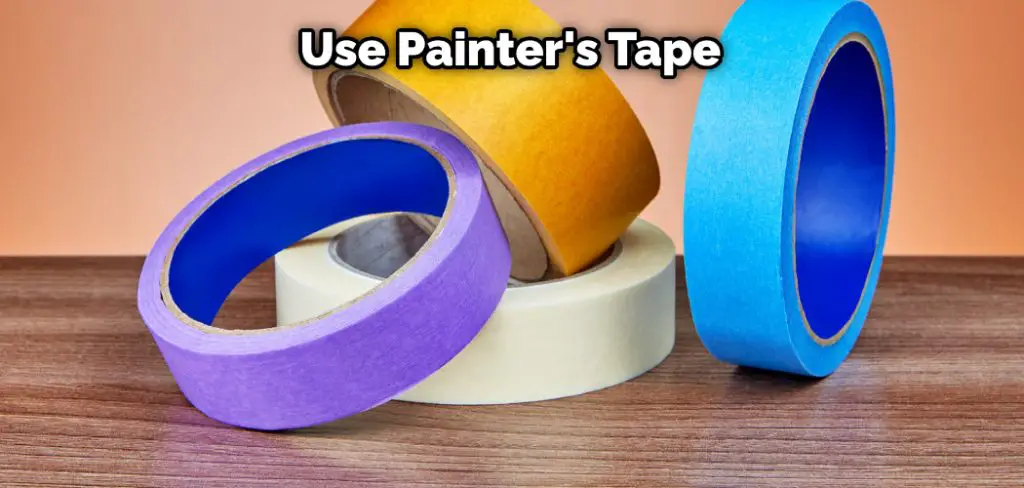There’s no doubt that wood floors are a classic choice for many homes. They’re beautiful, durable, and can last for years with the proper care. But what if you’re ready for a change? Whether you want to go lighter or darker, changing the color of your wood floors is a great way to give your space an updated look. Here are some tips on how to change the wood floor color.
Summary: There are a few ways to change the wood floor color in your home. You can either dye the existing flooring, or you can purchase new flooring and have the color changed at a store. Whichever route you choose, be sure to research the colors that are available before making a decision.

7 Tips to Follow on How to Change the Wood Floor Color
1. Pick the Right Stain Color
The first step in giving your wood floors a new look is to pick the right stain color. If you’re unsure where to start, look at some flooring inspiration online or in magazines. Once you have an idea of the direction, you want to go, head to your local home improvement store and pick up some sample stains. It’s important to test the stain on your flooring before deciding to see how it will look in your space.
2. Prepare Your Floors for Staining
Once you’ve decided on the perfect stain color, it’s time to prep your floors for staining. First, check for any scratches or damage and repair accordingly. Next, clean your floors thoroughly using a gentle cleanser and a soft cloth mop.
Once your floors are clean and dry, sand them down using medium-grit sandpaper. This will help create a smooth surface for the stain to adhere to. Finally, vacuum and tack (wipe with a damp cloth) the floor to remove any dust particles before beginning the staining process.
3. Apply the Stain evenly
Once your floors are prepped and ready to go, it’s time to apply the stain. For best results, use a paint pad applicator rather than a brush to avoid any streaks or lap marks. Again, work in small sections, and be sure to apply the stain evenly across the flooring. Once you’ve finished applying the stain, allow it to dry completely before adding a top coat of polyurethane (this usually takes about 24 hours).

4. Add a Top Coat of Polyurethane
After the stain has dried completely, it’s time to add a polyurethane top coat. This will help protect your floors and give them a nice shine. Again, work in small sections, and be sure to apply the polyurethane evenly. Allow the polyurethane to dry completely before walking on your floors (this usually takes another 24 hours).
5. Let Your Floors Cure
After you’ve applied the stain and polyurethane, it’s important to let your floors cure. This means that you should avoid walking on them or placing any furniture on them for at least 72 hours. This will give the finish time to set properly and prevent any damage from occurring.
6. Enjoy Your New Floors!
Once your floors have cured, you can finally enjoy your new space! Be sure to take care of your floors by sweeping and mopping them regularly. Please contact a professional if you have any questions about changing the wood floor color or need help with the staining process.
7. Hire a Professional
If you’re not comfortable tackling this project on your own or don’t have the time to do it yourself, consider hiring a professional. A professional flooring contractor will be able to stain your floors quickly and efficiently. Plus, they can offer advice on maintaining your floors to look their best for years to come.
That’s it! You’ve now learned how to change the wood floor color. If you follow these tips, you’ll surely achieve beautiful, long-lasting results.

Why Changing the Wood Floor Color Can Refresh Your Home
A fresh coat of paint can brighten up any room, but changing the color of your wood floors can have an even bigger impact. Whether you want to go for a bold new look or simply refresh your home’s existing color scheme, switching up the hue of your hardwood floors is a great way to achieve it. And unlike painting, staining your floors is a relatively simple and inexpensive DIY project that can be done in just a weekend.
Remember a few things to remember when choosing a new color for your floors. First, consider the overall style of your home and what kind of atmosphere you want to create. Darker colors are more formal and elegant, while lighter colors are more casual and inviting. If you’re not sure what direction you want to go in, start by looking at some flooring inspiration photos online or in magazines.
Once you know what you like, head to your local hardware store and pick out a few stain samples to try out on an inconspicuous area of your floor. And don’t forget to factor in how the new color will look with your furniture and decor. A good rule of thumb is to choose a shade that is either two shades lighter or darker than your current floor color.
With a little time and effort, changing the color of your wood floors is a simple way to give your whole home a fresh new look. So why not give it a try? You might be surprised at just how big of a difference it can make.
5 Easy Ways to Change the Wood Floor Color
Many homeowners love the look of hardwood floors, but sometimes the wood floor color is not quite what they had in mind. If you have wood floors that you would like to change the color of, here are five easy ways to do it:
- Paint: This is probably the easiest and most popular way to change the color of your wood floors. You can either paint them one solid color or get creative and paint patterns or designs on them. Just make sure that you use high-quality paint designed for floors.
- Stain: Staining your floors is a great way to change the color while allowing some of the wood grain to show. There are many different colors of stains available, so you can definitely find one that will work for your space.
- Refinish: If you want to completely change the color of your wood floors, refinishing them is the way to go. This process involves sanding down the floors and then applying a new stain or paint color. It’s a bit more work than just painting or staining, but it will definitely give you the results you’re looking for.
- Add a Rug: One way to change the look of your wood floors without actually changing the color is to add a rug. Rugs come in all different colors and patterns, so you can definitely find one that will complement your space perfectly. Plus, they add an extra layer of warmth and coziness.
- Change Your Furniture: Another way to change the look of your wood floors without changing the color is to change your furniture. If you have dark furniture, try switching it out for lighter pieces. Or, if you have light furniture, try adding some darker pieces into the mix. This will create contrast and make your space feel more dynamic overall.

How to Choose the Right Wood Floor Color for Your Home
Choosing the right wood floor color for your home can be tricky. If you have a light-colored decor, you may want to choose a light-colored wood floor to keep the space feeling airy and open. Alternatively, if you have a dark-colored decor, you may want to choose a dark-colored wood floor to create a cozy and intimate feeling.
There are also several other factors to consider when choosing a wood floor color, including the size of the room, the type of furniture, and the overall style of the home. With so many options available, it is important to take your time and find a color that will complement your existing decor and provide the look and feel that you are hoping to achieve.
How to Protect Your Floors from Damage After Painting
When it comes time to paint your walls, the last thing you want to worry about is damaging your floors. However, paint drips and spills are all too common and can lead to a big mess.
Fortunately, you can take a few simple steps to protect your floors and keep them looking their best. First, be sure to lay down a drop cloth or tarp before starting any painting. This will catch any drips or spills and can be easily removed when the job is done.
Second, try to use painter’s tape to create a barrier between the wall and the floor. This will help to prevent paint from seeping onto your flooring. Finally, avoid walking on wet paint, as this can leave footprints or smears. Taking these precautions can minimize the risk of damaging your floors while painting.

Conclusion
Changing the color of your wood floors is an easy way to give your space an updated look without replacing your flooring entirely. With these tips, you can successfully stain your wood floors and achieve your desired look. Thanks for reading our post about how to change the wood floor color.
You Can Check It Out To How to Emboss Wood Furniture
